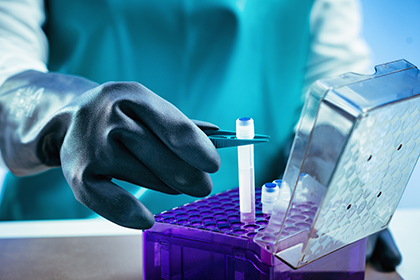An Overview of Stem Cell Therapy: Potential, Applications, and Ethical Considerations
An Overview of Stem Cell Therapy: Potential, Applications, and Ethical Considerations
Blog Article
Stem cell therapy has emerged as one of the most promising and controversial regions of medical research and treatment in recent years. By harnessing the body’s natural power to repair and regenerate tissue, stem cell therapy near me supports the potential to treat a wide range of conditions, from chronic illnesses to traumatic injuries. Here’s an in-depth examine what stem cell therapy is, the ins and outs, and its potential applications.
What Is Stem Cell Therapy?
Stem cell therapy involves using stem cells to take care of or prevent a disease or condition. Stem cells are unique since they have the ability to develop into variations of cells in your body, like muscle cells, blood cells, or brain cells. They also have the ability to repair and replace damaged tissues, making them a powerful tool in regenerative medicine.
There are two main forms of stem cells utilized in therapy:
Embryonic Stem Cells (ESCs): These are derived from early-stage embryos and have the potential to develop into any cell type in the body. Due to their versatility, ESCs are valuable in research but raise significant ethical concerns.
Adult Stem Cells (ASCs): These are found in various tissues through the entire body, like bone marrow or fat. While they may be more limited in their power to differentiate into different cell types when compared with ESCs, they're widely used in therapies and they are less controversial.
A third type, induced pluripotent stem cells (iPSCs), are adult cells that have been genetically reprogrammed to become embryonic stem cells. iPSCs offer a lot of the benefits of ESCs without the associated ethical issues, causing them to be a significant focus of current research.
How Stem Cell Therapy Works
Stem cell therapy typically involves harvesting stem cells from the patient’s own body (autologous therapy) or from a donor (allogeneic therapy). The harvested stem cells are then processed and injected in the area of the body that has to have treatment. The stem cells are able to potentially repair or replace damaged tissues, reduce inflammation, and promote healing.
For example, in orthopedic applications, stem cells might be injected in a damaged joint to regenerate cartilage, reducing pain and improving function. In cardiac care, stem cells could be used to correct heart tissue after having a heart attack.
Potential Applications of Stem Cell Therapy
The potential applications of stem cell therapy are vast and attempt to expand as research progresses. Some of the most promising areas include:
Regenerative Medicine: Stem cells are being used to repair and regenerate damaged tissues and organs. This includes treating conditions including osteoarthritis, spine injuries, and heart disease.
Neurological Disorders: Research is going through the use of stem cells to take care of neurological conditions like Parkinson’s disease, Alzheimer’s disease, and stroke. The ability of stem cells to regenerate nerve cells could offer new wish for patients with these challenging conditions.
Autoimmune Diseases: Stem cell therapy is being investigated like a treatment for autoimmune diseases like multiple sclerosis (MS) and lupus, the location where the immune system attacks the body’s own tissues.
Cancer Treatment: Stem cells are already employed in bone marrow transplants for leukemia and other blood cancers. Researchers are exploring ways to use stem cells to provide targeted therapies to cancer cells.
Wound Healing: Stem cells can accelerate the healing of chronic wounds, including diabetic ulcers, by promoting the regeneration of healthy tissue.
Organ Regeneration: Scientists work on solutions to grow entire organs from stem cells, which could one day eliminate the need for organ transplants and lower the risk of organ rejection.
Ethical Considerations
While the potential advantages of stem cell therapy are significant, the usage of embryonic stem cells raises ethical concerns. The process of obtaining ESCs necessitates the destruction of human embryos, which a lot of people believe is morally wrong. This has generated ongoing debates about the ethical implications of stem cell research and the need for regulations that balance scientific advancement with ethical considerations.
Induced pluripotent stem cells (iPSCs) provide a potential means to fix these ethical issues, they do not require the destruction of embryos. However, iPSC technology remains in its early stages, where there are concerns about the opportunity for genetic mutations as well as other risks.
The Future of Stem Cell Therapy
The way ahead for stem cell care is filled with promise, but significant challenges remain. Ongoing principals are needed to better understand how stem cells work, how to control their differentiation, and how to ensure their safety and efficacy in patients. As science progresses, stem cell therapy may revolutionize the way we treat a wide range of diseases and injuries, offering new hope to millions of patients.
However, it’s important for patients to approach stem cell therapy with caution. While many therapies are still experimental, and not all claims made by clinics offering stem cell treatments are backed by solid evidence. Patients should consult with qualified healthcare providers and consider participating in clinical trials to be sure they receive secure and efficient treatments.
Stem cell therapy represents a cutting-edge procedure for medicine that may transform the management of many conditions. From regenerative medicine to the treatment of neurological disorders and autoimmune diseases, the opportunity applications are vast. However, the ethical considerations and scientific challenges surrounding stem cell therapy have to be carefully navigated because the field is constantly evolve. With ongoing research and ethical oversight, stem cell therapy could turn into a cornerstone of 21st-century medicine.